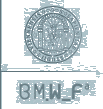City, art, and architecture in Tito's Yugoslavia
[ City, art, and architecture in Tito's Yugoslavia ]
The artistic and architectural output of Tito’s Yugoslavia seems to gradually claim some space in international academic media. In a recent special issue of the Journal of Architecture (Vol. 14, No. 1, TOC here) titled “Behind the Iron Curtain: architecture in the former communist bloc, between isolation and fascination” we also find the article “‘East? West? Or Both?’ Foreign perceptions of architecture in Socialist Yugoslavia” by Vladimir Kulic (Florida) on pp. 129-47. Those interested will find below the gist of his argument, most heavily truncated (largely from pp. 129-33):
"Architecture and art were important tools in constructing Yugoslavia’s distinction from other communist countries … By defying the stereotypical image of architecture in a socialist country, Yugoslav modernism provided a clear visual statement of cultural affinity and, by extension, political alliance with the West. But once the hostilities with the communist bloc subsided in the late 1950s, which coincided with the final demise of Socialist Realism, the prevalence of socialist typologies allowed Yugoslav architecture to be seen positively in the East as well. [T]wo opposed but complementary interpretations thus emerged, which rendered not only Yugoslavia’s politics, but also its architecture ambiguous … Taking advantage of the fact that in architecture Socialist Realism was never clearly defined, [Yugoslav architects] paid lip-service to it and at the same time subverted its rhetoric to argue against monumental historicism …Yugoslav architecture [switched] from a politically imposed orientation towards the communist East to a gradual integration into Western modernism. Perhaps most symbolic of this integration was the last, tenth meeting of CIAM (Congre´ s Internationaux de l’Architecture Moderne), which Yugoslav architects hosted in Dubrovnik in 1956, even though their own presence in it was barely visible. [Since] the cultural production of the communist bloc had a limited presence in the West … Yugoslavia was not only a curiosity for its modernism, but also for being accessible at all.”
< previous Posting next >
<< previous Topic next >>
Balkancities






Antworten